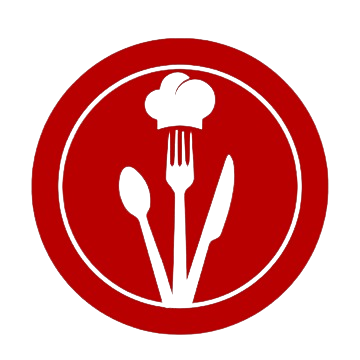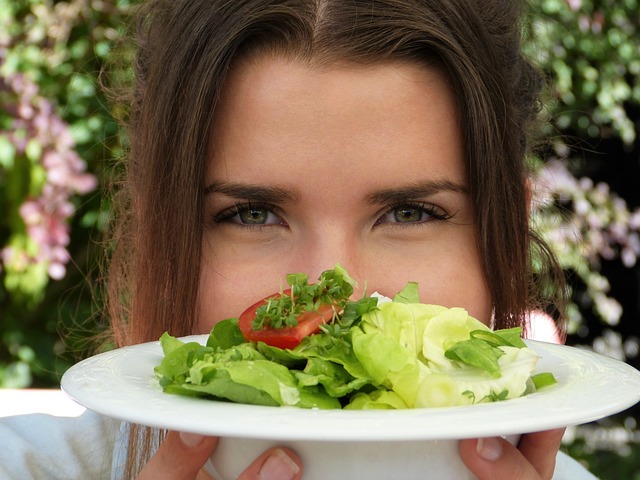Many people love using gas grills for cooking outdoors. But like all things with fire, we need to be careful.
This opens up the question: Are gas grills safe to use?
We’re here to tell you, yes, gas grills are safe to use — but there are a few caveats to keep in mind.
As with anything involving fire, there are, of course, some risks involved with cooking on a gas grill.
But with the right maintenance and safety know-how, you can cook up delicious meals on your gas grill with confidence that you, your family, and your property will stay safe while grilling.
In this guide, we’ll cover everything you need to know about how gas grills work and how to use them properly.
We’ll take a look at how safe gas grills actually are and give you tips to use them safely, so you can enjoy countless days of safe and worry-free grilling.
Let’s get into it!
How Gas Grills Work
Gas grills work by using liquid propane gas or natural gas as their primary fuel source. When you light your grill, the gas flows from the tank or your home’s gas hookup and into your grill’s burner, where it’s ignited to become the flames that you’ll cook over.
Some grills have one long burner, or several spread out across the cooking surface, but the general idea stays the same: gas flows into the burners, where the grill’s ignitor then lights the gas.
Gas grills also come with heat plates under the cooking surface, which help shield the burners from dripping grease and food debris and channel them away into a drip pan. This reduces the risk of flare-ups and keeps your burners and grill free of excess gunk.
You can control the temperature of your grill by turning a knob and either increasing or decreasing the amount of gas that’s allowed to flow out into the burner. More gas gives you larger flames and higher temperatures, while less gas will give you the low temperatures needed for low and slow cooking.
Once you turn the knob and cut off the flow of gas, your grill will shut off.
Are Gas Grills Safe?
Read the Owner’s Manual | Location | Lighting Correctly | Keep the Grill Clean | Regular Maintenance Checks | Check the Grill After Storage | Shut Down Properly
While the idea of cooking with flammable gas may seem scary, gas grills are perfectly safe if you understand how to use them safely and correctly.
Like all things that use gas and make heat, you need to be careful. This means looking after your grill, being careful with the gas, and putting it in a safe spot.
It’s true that if there’s a house fire involving a grill, more times than not, the grill involved is a gas grill. But that oftentimes boils down to the grill not being used or maintained correctly.
So, while gas grills are safe, it’s up to you to use them correctly.
Keep reading for my expert tips on gas grill safety.
Grill Safety Begins With Reading the Owner’s Manual
Just like you would for any major purchase (we hope, at least), reading the owner’s manual is essential to understanding how to safely operate and maintain your gas grill.
Even if you’ve used a gas grill before, it’s a good idea to read the manual to understand your grill’s specific use instructions and any recommended maintenance.
Locating a Gas Grill Safely
A huge part of using your gas grill safely is picking the right location to place it.
You might think your covered porch, balcony, or recess in your home will provide great shelter from the elements while you’re grilling, but all it takes is one errant spark to ruin your grilling experience and your property.
It’s recommended that you place your grill somewhere where it can have at least three feet (and ideally, ten feet) of clearance from flammable objects in every direction.
You should never place your grill close to a fence, wooden furniture, shrubbery, trees, overhanging branches, or have it sitting on combustible decking.
Instead, choose a spot with plenty of clearance, a flat, stable, and non-combustible surface, and no overhanging branches or accumulated leaves around.
Lighting a Gas Grill Correctly
Gas grills are known for how easy and convenient they are to light, but there are still a few steps we recommend you take to make sure your grill is lit safely.
First, take a look at the body of your grill —you’ll want to make sure there aren’t any bugs or animals taking shelter inside and that your burners don’t have any rusting or cracking.
Then, inspect your gas tank and propane lines, making sure there’s no denting, cracking, or obvious leaking. We suggest performing a gas leak test with a 50/50 solution of water and dish soap if you suspect there are any leaks or if it’s been a while since you last used your grill.
When it comes to actual lighting, you have two options: lighting your grill with its built-in ignitor system or lighting it manually.
Using the Built-in Ignitor System
Both methods will start with the same steps. Make sure your grill’s lid is open, and all of the knobs are off. Then turn the propane tank or natural gas knob to open it up and allow gas to flow into the system.
If you’re using your grill’s ignition system, press or turn your ignition button or knob until you hear the “whooshing” sound that indicates your grill has lit.
Lighting Manually
If your ignition system isn’t working or is out of batteries, you still have the option to grill by lighting the gas manually. To do this, find the holes on the side or base of your grill where you can insert a long match or lighter. If your grill doesn’t have a hole, you can use a long match or lighter to directly light the burners — just stand far back.
Then turn on the burner closest to the hole, and use your match or lighter to light it. The rest of the burners should automatically light themselves once you turn their knobs on, but if not, you may need to light each burner individually.
The rule of thumb when lighting your grill manually is to use as long of a match, lighter, or match holder as possible, keep your grill lid open to avoid gas buildup, and stand back!
Keep the Grill Clean
A clean grill is a safe grill, so make cleaning a regular part of both your pre- and post-grilling routine. If any grease is left behind, it can easily ignite inside of a hot grill and cause a fire, but regular maintenance and cleaning can help prevent that!
Perform regular visual inspections to make sure your burners’ holes are clean and free of debris and that there are no rusty areas, holes, or soft spots in the burners. Bugs can make a home inside of the burner tubes and prevent grill ignition or even cause flashback fires, so grab a tube brush and regularly clean these out as well.
Your grill’s grates and heat plates should also be free of rust and caked-on debris. It’s best to do this after grilling when your grill is still a bit warm, and you can easily scrub or scrape grease and drippings off of your grates, heat plates, and grease trap.
At least twice a year, do a full cleaning where you completely gut your grill and give it a thorough inspection and a deep clean. If any parts look rusty or like they’ve started to deteriorate, it’s time to replace them.
Give the Grill a Regular Maintenance Check
Think of your grill like your car: if you want it to run safely and correctly for as long as possible, you’ll need to perform regular maintenance on it.
Before you light your grill, give its regulator, hoses, burners, and valves a thorough look over for rust, cracking, or any other signs that they aren’t in the best shape.
This is another place where your owner’s manual will be your best friend — it should have instructions for a maintenance check specific to your grill model.
Check the Grill After Storage
If your grill has been in storage for the winter, or you just haven’t used it for a while, always check it over before you light it for the first time.
Take a look at the hose coming from your propane tank or natural gas line to make sure it hasn’t cracked, split, or dried out. Then, take a peek at your burners to make sure they’re clean and free of obstructions.
This is another time when you’ll want to perform a leak test with that dish soap and water solution. Mix up your 50/50 solution, put it in a spray bottle or bowl, and then spray or wipe it down around the hose, valve, and regulator. Turn your gas flow on so gas flows into the system, but do not light the burners.
If you see any bubbles, immediately shut off the gas, disconnect it, and either replace the leaking part or call a professional for repair.
Make Sure to Shut the Grill Down Properly
Grilling safety is important even after the actual grilling is finished!
When you’re done cooking, turn off all of the burners and your gas supply.
Give your grates a scrub with a non-wire grill brush while they’re still warm and easy to clean, and then you can go enjoy your food.
Only Use Propane Grills Outside
Your propane grill should only ever be used outside in a well-ventilated area — never grill inside or within an enclosed space like a shed or garage.
The obvious danger here is that grilling inside can cause damage or fires from burning debris or flare-ups.
But even when your grill is shut off, gas leaks can cause carbon monoxide poisoning and increase the risk of a house fire or explosion.
Wear the Right Gear for Grilling
We get it — nothing says summer like grilling out in your favorite giant Hawaiian shirt.
But most fabric is flammable, and loose clothing, long sleeves, and apron strings can all pose a risk of catching fire while you’re standing at the grill.
Instead, wear more snug-fitting outfits, choose short sleeves, and make sure your apron strings are tied back and tucked away.
If you want to take it a step further, you can even invest in heat-resistant protective clothing like grilling gloves.
Always Start the Grill With the Lid Open
The first step of lighting your grill should always be lifting the lid open. The lid should be open before turning on the gas supply.
If you don’t, gas can build up inside and cause a major flare-up or even an explosion when you go to ignite the burners.
I can’t stress this one enough. Never try to light a gas grill with the lid closed!
If the Burner Doesn’t Ignite, Wait to Relight
If your grill burners won’t light right away or go out in the middle of grilling, don’t keep trying to light them immediately.
The gas that builds up while you’re trying to light the grill can cause a flare-up that can lead to serious injuries.
Instead, turn the gas off, keep the lid open, and wait at least five minutes for the gas to dissipate. Maybe go grab a snack or a drink while you wait. After that, you can relight the burner.
Don’t Lean Over the Grill When Cooking
Leaning over your grill while cooking or lighting it can cause your clothes to catch fire and even cause major injuries, so don’t do it.
Just think about it — do you want your face to be in the line of fire in the event of a flare-up?
Don’t Overload the Grill With Food
Overloading your grill with food is dangerous for two reasons.
First, the more food you have on the grill, the more grease and fat that will be dripping down onto the burners, increasing your risk of fire or flare-ups.
Overcrowding also means the food might not have as much contact with the grill, which can lead to undercooking and the potential for food poisoning like salmonella or E. coli.
Don’t Leave a Gas Grill Unattended
Whatever you do, do not leave a gas grill unattended while you’re cooking.
Staying by your grill means you’ll be around to catch any potential flare-ups or fires, not to mention keeping kids and pets away from the hot grill.
Be Prepared to Put Out Fires
Even with the right maintenance and safety precautions, fires can happen while you’re grilling.
Although it’s extremely rare, it’s best to be prepared for the possibility of a fire with a box of baking soda to put out grease fires, a fire extinguisher, and salt to help smother a fire before it gets out of hand (and to season your food — bland food is an emergency in its own right).
Just remember that the majority of grill fires will happen because of grease buildup, so never try to put a grease fire out with water. Throwing water on a grease fire can lead to the burning grease splashing or even exploding out of your grill.
Use a Meat Thermometer
The only surefire way to know that your food is properly cooked and safe to eat is with a meat thermometer.
Meat that hasn’t reached the correct temperature can still contain bacteria that lead to food poisoning, so it’s better to be safe than sorry.
Here are two that I like for reference: ChefsTemp Finaltouch X10 Instant Read Thermometer and The MeatStick 4X.
Don’t Cross-Contaminate Foods
While we’re on the topic of food poisoning, avoid cross-contamination by using separate knives, cutting boards, and utensils for raw meat.
If you’ll be handling raw meat with your hands, wear disposable gloves that get tossed away before you touch any other food or tools, and wash your hands with warm water and soap any time you’re done working with raw meat.
Can a Gas Grill Propane Tank Explode?
Propane tanks can potentially explode only under certain conditions.
First, always make sure your gas valve and all of your grill knobs are shut off when you’re done cooking to reduce the risk of gas buildup.
Your propane tanks should always be kept somewhere outdoors with good ventilation since this also helps reduce the risk of an explosion caused by gas buildup.
Never keep your tank in your car or indoors, even in a garage or a shed, since leaking gas and a single spark could cause the structure to explode.
Propane tanks can also explode when exposed to extreme heat (and we’re talking really extreme, like over 160° F), so never leave it anywhere near fires or other sources of flame or intense heat.
Be Careful Not to Overfill Your Propane Tank
Propane tanks are only designed to be filled about 80% of the way up since the gas expands as the temperatures around it increase (like in the summer sun or while connected to a grill that’s in use).
If a tank is filled by more than 80%, it can become difficult to regulate the flow of propane from the tank and even increase the risk of explosion.
Why You Shouldn’t Leave the Propane Tank Valve Open
Even though you may have turned your grill’s control knobs off, it’s just as important that you close off your propane tank’s valve as well.
If you leave the gas valve open, and the control knobs get bumped into the on position by accident, you could end up creating a build-up of gas in your grill and increasing the risk of — yup, you guessed it — an explosion.
Here are a few more reasons why you should always close the propane tank valve when not in use:
- Leak Risks: Even when your grill is off, leaving the valve open can allow gas to escape, especially if there’s a slight malfunction or defect in your grill’s regulator or hose.
- Waste of Fuel: Propane isn’t cheap, and even small leaks from an open valve can lead to a waste of fuel over time.
- Contamination & Blockage: An open valve can let in moisture, which can lead to rust formation inside the tank. Additionally, contaminants can enter, leading to blockages in the regulator or burners the next time you use the grill.
- Safety Hazards: A significant leak can result in a flammable cloud of gas surrounding the grill. If an ignition source is present, it could lead to a fire or explosion.
If the valve is always open, you might miss signs of a minor leak. Over time, this could worsen, leading to significant issues later.
Quick Refresher: Gas Grill Safety Do’s and Don’ts
Keeping these tips fresh in your mind is important for enjoying safe, carefree days of grilling.
So let’s go over the basics once more, for good measure:
- DO read your grill’s user manual before firing it up for the first time.
- DO make sure all of your burner knobs AND the gas valve are shut off when you’re done cooking.
- DO keep kids and pets away from the hot grilling while you’re cooking and at least an hour afterward while the grill cools down.
- DO use your grill outdoors in a well-ventilated area.
- DO keep up with your grill’s maintenance and perform a visual check of its burners, gas tank, and hoses before use.
- DO open the grill’s lid before turning the gas on.
- DO cover your grill when it’s not in use — after it’s cooled down completely.
- DO NOT store your propane tank indoors or near an open flame when it’s not in use.
- DO NOT leave your propane tank in your car after filling it.
- DO NOT use a match to test for gas leaks — use a mixture of water and dish soap to look for bubbles instead.
- DO NOT smoke near your grill.
- DO NOT wear long, loose sleeves or dangling apron strings while grilling.
By following these gas grill safety tips, gas grills can be a safe way to cook outdoors for you and your family.
Gas Grill Safety FAQs
Still have questions about gas grill safety?
Below you’ll get answers to some of the most frequently asked questions to help you safely use a gas grill.
If you don’t find what you’re looking for, leave your question in the comments below or send me an email and I will get back to you.
Who knows, I might even add your question to this guide.
For a more in-depth frequently asked question guide, check out this article: The Ultimate Gas Grill FAQ.
Final Thoughts on Our Are Gas Grills Safe Guide
When it comes to grilling, safety should be your top priority at all times.
Gas grills, at their core, are incredibly convenient and safe appliances to use. But as with any cooking appliance, it’s important to understand how they work, how to use them safely, and how to avoid common mistakes people make while using them.
With the information in this guide, we’ve covered all of the basics of safe grilling and grill maintenance that should keep you, your family and guests, and your grill healthy and happy for seasons to come.
Keep these tips in mind every time you go to use your grill and resist the temptation to take shortcuts around cleaning and maintenance. You’ll be happy you did!
If you have any lingering questions about grill safety or maintenance, let us know in the comments below or send us an email, and we’ll do what we can to get you an answer.
Cheers,
Pat G.
#Gas #Grills #Safe #Safety #Practices




